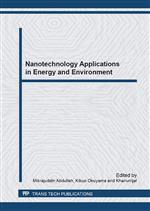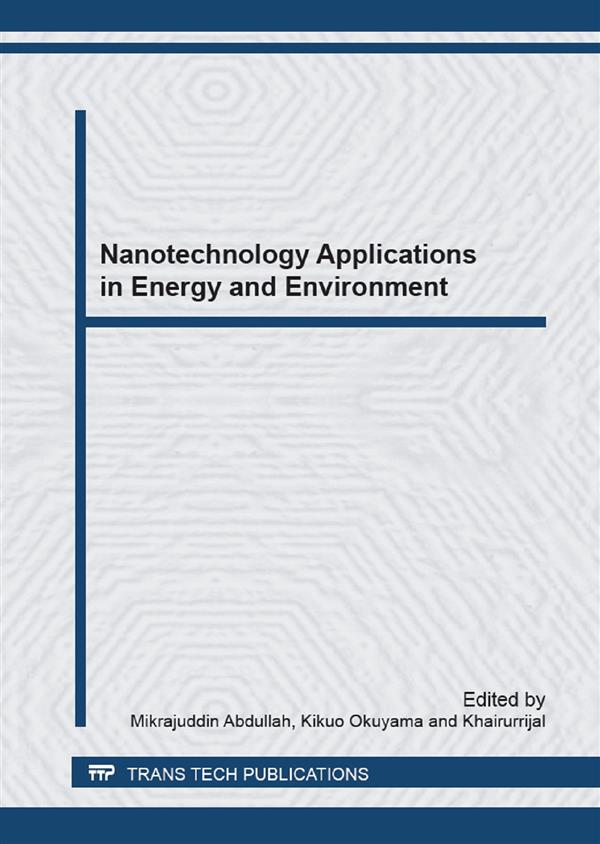Engineering Research
Materials Science
Engineering Series
Nanotechnology Applications in Energy and Environment
Description:
This book contains some 32 peer reviewed papers on applications of nanotechnology in energy and environment. Some of the papers describe the development of nanoparticle-based solar cells, new technique for decomposing organic pollutant in water and, using nanotechnology in oil recovery especially for heavy oil lifting. Synthesis, characterizations, and applications of nanomaterial are also discussed. This book will be a good reference for researchers in the corresponding field.
Purchase this book:
Info:
Review from Ringgold Inc., ProtoView:
Organizers hope this will evolve into an important event for sharing andgenerating ideas about using nanotechnology to solve energy andenvironmental concerns of poor countries. The 32 papers consider such topicsas controlling the crystallite size of zinc oxide nanorods with chemicalbath deposition and post-hydrothermal treatment, the effect ofelectrochemical reaction environment on the surface morphology andphotoluminescence of porous silicon, the hydrogen adsorption behavior ofmechanically milled and pelletized coconut shell activated carbon, applyingorganic semiconductors in solar photovoltaic and sensor devices, and theeffect of multi-wall carbon nanotubes on the electrical conductivity ofpolymer composite as alternative materials for bipolar plate fuel cell.

